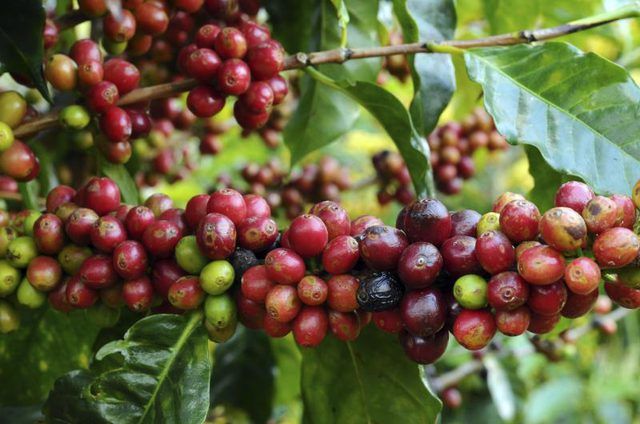Bulbs
Flower Basics
Flower Beds & Specialty Gardens
Flower Garden
Garden Furniture
Garden Gnomes
Garden Seeds
Garden Sheds
Garden Statues
Garden Tools & Supplies
Gardening Basics
Green & Organic
Groundcovers & Vines
Growing Annuals
Growing Basil
Growing Beans
Growing Berries
Growing Blueberries
Growing Cactus
Growing Corn
Growing Cotton
Growing Edibles
Growing Flowers
Growing Garlic
Growing Grapes
Growing Grass
Growing Herbs
Growing Jasmine
Growing Mint
Growing Mushrooms
Orchids
Growing Peanuts
Growing Perennials
Growing Plants
Growing Rosemary
Growing Roses
Growing Strawberries
Growing Sunflowers
Growing Thyme
Growing Tomatoes
Growing Tulips
Growing Vegetables
Herb Basics
Herb Garden
Indoor Growing
Landscaping Basics
Landscaping Patios
Landscaping Plants
Landscaping Shrubs
Landscaping Trees
Landscaping Walks & Pathways
Lawn Basics
Lawn Maintenance
Lawn Mowers
Lawn Ornaments
Lawn Planting
Lawn Tools
Outdoor Growing
Overall Landscape Planning
Pests, Weeds & Problems
Plant Basics
Rock Garden
Rose Garden
Shrubs
Soil
Specialty Gardens
Trees
Vegetable Garden
Yard Maintenance
How to Care for a Coffee Plant
How to Care for a Coffee Plant. Also called Arabian coffee, coffee plant (Coffea arabica) is one of several species responsible for providing the coveted beans used to make the coffee beverage. Coffee plant is an upright, evergreen shrub that showcases shiny, dark green leaves, star-shaped white blooms and bright red berries, which encase the hard...

Also called Arabian coffee, coffee plant (Coffea arabica) is one of several species responsible for providing the coveted beans used to make the coffee beverage. Coffee plant is an upright, evergreen shrub that showcases shiny, dark green leaves, star-shaped white blooms and bright red berries, which encase the hard seeds known as coffee beans. Coffee plant can be grown outdoors in frost-free gardens, or indoors in a container.
Avoid Direct Sunlight
Coffee plant grows outdoors in U.S. Department of Agriculture plant hardiness zones 10 through 11, where it requires light shade or filtered sunlight. In the wild, coffee plant typically grows under trees. Choose a protected area free from hot, drying winds. If you're planting multiple shrubs, allow 36 to 60 inches of space between plants. Coffee plant doesn't tolerate salty soil, so it's not a good choice for coastal gardens.
Use Well-Draining Soil
Coffee plant tolerates range of soil types, though it will produce its best growth in a deep, well-draining soil with a pH between 4.2 and 6.0. Chlorosis, an unattractive yellowing of the leaves, will likely occur in soils with a pH above 7. In spring or fall, scatter 1/2 cup of an 8-8-8 fertilizer evenly on the ground under the shrub. Water afterwards to help the fertilizer disperse into the soil. Keep the fertilizer off plant stems and leaves.
Check for Pests
Mealybugs, thrips, scale insects and mites all attack coffee plant, sucking up plant sap and causing leaf damage and decreased vigor. To dislodge pests, wash the shrub with a direct stream of water. For more severe infestations, spray the shrub with horticultural oil. Thoroughly mix 2 to 5 tablespoons of horticultural oil in 1 gallon of water and use a hand sprayer to spray the shrub evenly, coating the stems and both the undersides and tops of leaves until wet. Protect yourself by wearing rubber gloves, long sleeves and pants, and store remaining oil in a secure area away from children and pets.
Grow Coffee Plant Indoors
In cooler climates, you can grow coffee plant as a house plant. Use a container with a hole in the bottom for drainage, and a well-draining potting soil. Place the plant in a bright, sunny window. When spring frosts have passed, move the plant outdoors for the summer in a lightly shaded spot. Water the plant regularly to keep the soil moist but not wet, and prune or pinch it back as needed to control size and keep its shape attractive. Repot the coffee plant every year or two in a larger container, refilling the pot with fresh soil. Fertilize once or twice a month during the growing season with 14 drops per 1 quart of water of a 10-10-10 liquid houseplant fertilizer, or a similar fertilizer, according to the directions on the label.